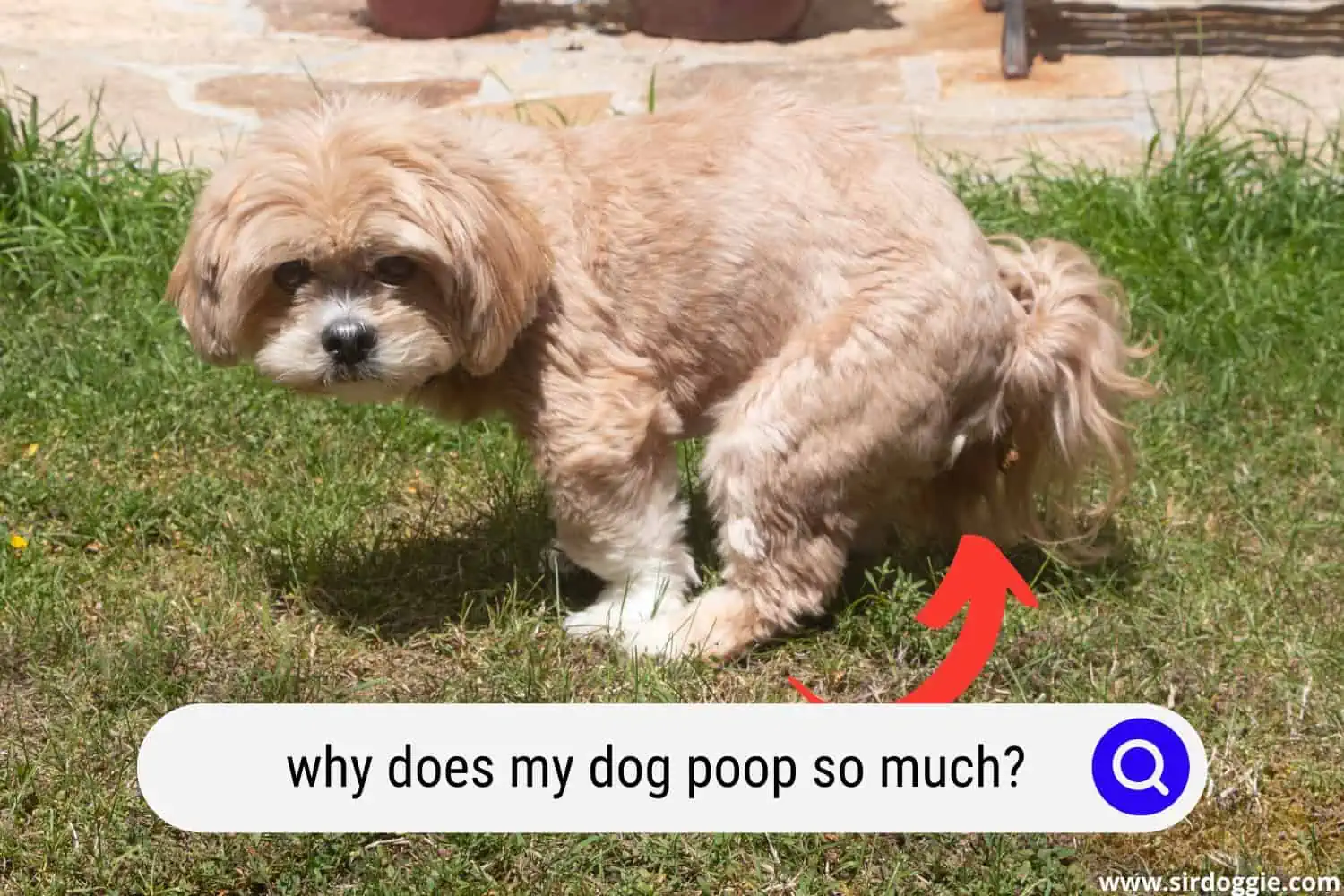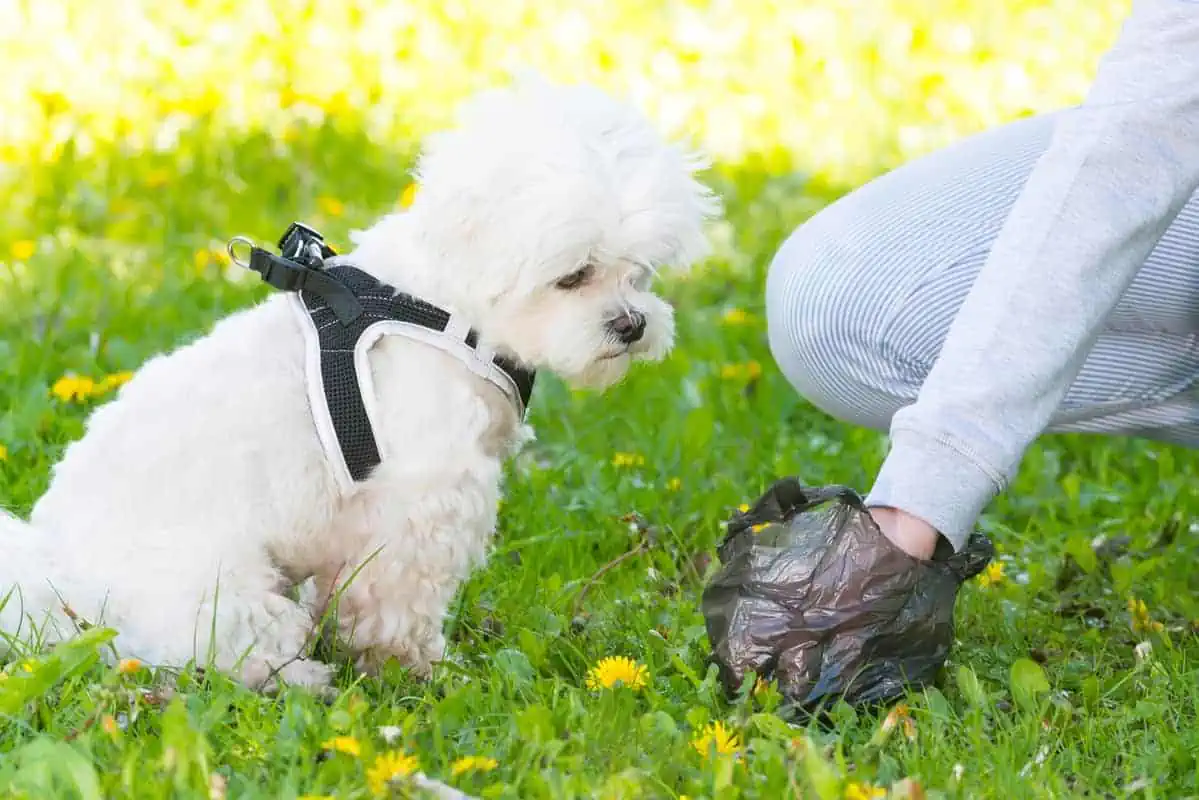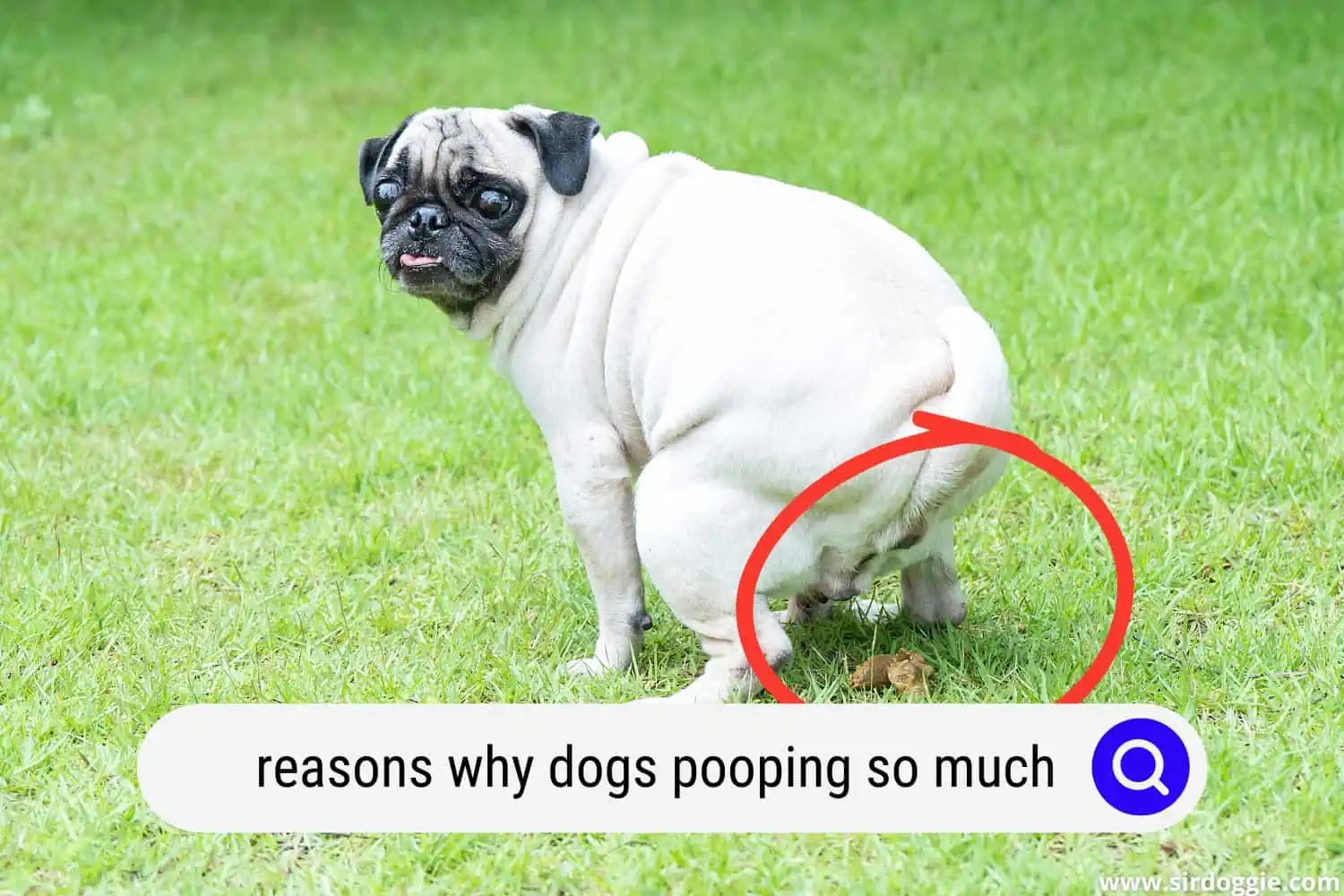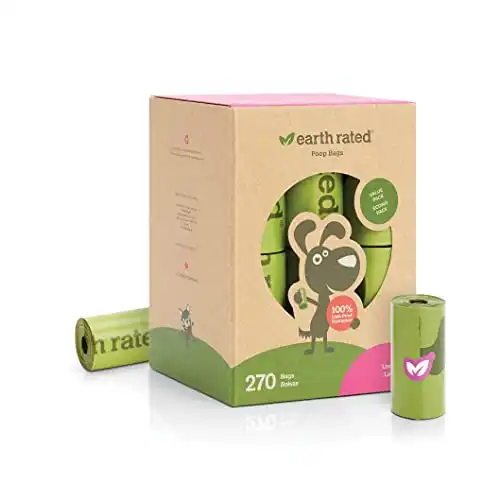Why Does My Dog Poop So Much? 7 Reasons Explained
One of the most common reasons for dogs pooping so much is fecal bacteria. One gram of bacteria in dog poop can have almost 23 million fecal coliform bacteria, and this bacteria is responsible for causing diarrhea, upset stomachs, and intestinal illnesses.
Pet parents go through endless rolls of plastic poop scoop bags. While it’s often a relief to see that your dog has taken care of business, it may seem alarming if your dog’s pooping habits start to happen multiple times each day.

You’re probably asking yourself, why does my dog poop so much?
Dog feces can also contain hookworms and whipworms, which are intestinal parasites that can cause a lot of intestinal distress and anemia in dogs.
So it goes without saying that one of your first courses of action when dealing with a dog that poops too much is to have them be examined by your veterinarian.

Related Reading: Why Is There Hair In My Dog’s Poop?
How Much Dog Poop is Too Much?
The follow-up question to ‘Why does my dog poop so much?’ probably has to do with quantity. Generally, dogs poop anywhere from one to four or five times each day. Each dog is different. You need to pay attention to your dog’s patterns. Think about how many times they have pooped each day since you’ve had them.
If your dog has pooped the same number of times each day over time, then there is nothing to worry about. Some dogs poop more than others naturally. The time to worry is when you notice a significant change in the number of poops happening per day.
If you notice that your dog is suddenly pooping a lot more than usual, pay attention to whether they are excreting in their normal spots. Dogs that poop outside of their normal areas and have watery stool could be experiencing diarrhea, which is likely connected to another issue.
Here are 7 Common Reasons Your Dog Is Pooping So Much
Alright, now that we understand how much dog poop is too much and when it’s appropriate to be concerned, let’s look at some common reasons why your dog is pooping so much.
While this list is not exhaustive, we hope it gets you closer to figuring out what has changed to cause your dog’s excessive pooping.
1. Bacteria
One of the most common reasons for excessive dog poop is bacteria. One gram of bacteria in dog poop contains up to 23 million fecal coliform bacteria, and this bacteria is responsible for causing diarrhea and intestinal illness’ and can get transmitted from your dog’s poop back to your dog.
2. Psychological Stress
When dogs are stressed, depressed, or anxious, it will often affect their bowel movements. It can cause constipation, issues with digestion, and diarrhea.
3. Eating too much
This should come as no surprise but if your dog is eating a lot, they’re going to be pooping a lot. It’s best practice to feed your dog at scheduled times and not just leave a bowl full of food all the time.
Also, you may want to consider keeping a closer eye on your dog for a few days. They may be eating something that you aren’t aware of, especially if they’re a new puppy in the home.
4. Colitis
Colitis affects a dog’s colon and causes it to become inflamed. An inflamed colon can lead to several issues including:
- Pain
- Discomfort
- Difficulty pooping
- Diarrhea
5. Intestinal cancer
Unfortunately, some animals and breeds of dogs are more prone to developing intestinal cancer. Cancer comes from mutated cells after division, so when more cells divide, more opportunities for a mutation happen, which is why intestinal cancer in dogs is more common in older dogs.
Some of the common clinical signs of intestinal cancer are:
- weight loss
- loss of appetite
- Vomiting
- Diarrhea
- blood in vomit or feces
Vomiting is more common with tumors in the upper (small) intestine of dogs while diarrhea in dogs is more common with tumors of the lower (large) intestine.
6. Unfamiliar surroundings
Similar to psychological stress in dogs, unfamiliar surroundings, such as the first time you bring your puppy home, can cause a lot of stress and discomfort in dogs.
Have you recently moved? Has your dog been going to a “doggie daycare”? Take some time to reflect on whether there has been a major change in your dog’s environment or routine. If there has, it should get better in a few days, especially if you give your doggie some extra comfort.
7. Change in diet
Changing your dog’s diet and dog food should always be done carefully as sudden changes can really upset your dog’s stomach. Most dog food companies include information on their packaging on how to gradually introduce their food to your dog.
Hill’s Pet recommends mixing your dog’s current food with new food and gradually decreasing the amount of current dog food over a 7-day period and increasing the new dog food.
The first two days would introduce about 25% of new food, then days 3 and 4 would be about 50%, Days 5 to 6 would be 75% new food and day 7 would be a good time to give 100% of the new food.
Here are some additional tips from Hill’s Pet when switching your dog’s food:
- Puppies become adults at 12 months of age and should transition to adult dog food to ensure they are receiving proper nutrient levels for adult dogs
- Large breed puppies and small breed puppies should switch to a large breed or small breed adult dog food to ensure that their special needs are met
- For small and medium-sized dogs who are older, about the age of 7, they should transition to a mature adult or senior dog food that ensures that they are receiving the appropriate level of nutrients for that older life stage
- For large breed dogs that are around 5 years of age, their food should switch to a mature adult or senior large breed dog food so that their special nutrient requirements are met
- Pregnant or nursing dogs need energy-dense foods with increased calcium content so be sure to transition them during this special time to puppy food. However, dogs during pregnancy or nursing, large breed dogs should be switched to regular puppy food, not a large breed puppy food
- If your veterinarian has recommended therapeutic dog food for a specific health condition, discuss transitioning his dog food in detail. There could be some special considerations and suggestions to ensure success
Dietary Causes of Excessive Dog Pooping
There are many possible reasons that your dog is pooping more than usual. If diarrhea is clearly the issue and your dog is a healthy adult, remove their food for 12 hours to let their stomach settle.
During those 12 hours, allow your dog to drink water. After 12 hours, reintroduce small amounts of food at a time and see if the diarrhea is remedied.
One of the main reasons your dog may be pooping too much is because they are eating more than they need. Make sure to talk to your veterinarian about establishing the appropriate portions to feed your dog.
To reduce the amount that your dog is pooping, you can try making portions smaller and feeding your dog smaller meals throughout the day. Track whether these methods help to improve your dog’s digestion.
Another common cause of excessive pooping is when dogs eat table scraps. Dogs are not meant to digest many types of human food, so feeding them scraps or leftovers could disturb the natural flow of their system. Be extra careful about closing the garbage can tightly too!
Have you changed your dog’s diet recently? Dietary changes can send your dog into a transition that will leave its body trying to catch up. Always introduce new foods at a gradual pace.
Do not simply switch from one type of food to another. Start with small amounts over a period of about a week.
During the introduction week, be on alert for any digestive disruptions. If you notice that your dog is not taking well to the new food, switch back!
Some of the links in this post are affiliate, and we may earn a commission.
Tips For Making Sure Your Dog’s Poop Is Healthy
It can be nerve-racking when your dog’s stool pattern changes. You may worry that there is an underlying health problem that needs to be dealt with. You can learn more about what is going on with your dog by taking a closer look at your dog’s poop. That’s right, it’s time to get up close and personal.
So, what does normal dog poop look like? Normal stool is firm and moist with a mild odor. If you see something else from your dog, there is something that needs to be addressed with their system.
Here are a few things to look out for in your dog’s poop:
Smells Worse Than Usual:
When you notice that your dog’s poop smells fouler than what you’re used to, it could be a sign that something in their diet isn’t agreeing with them. Think about whether they’ve eaten any new treats or food lately, or whether you may be feeding them too much.
Loose or Liquid-Like:
Dogs can have diarrhea for a number of reasons. When it is related to an isolated incident of food intolerance, it should clear up on its own. If you notice that your dog continues to have loose or liquid stools, you should consult your veterinarian.
This type of poop could indicate allergies or serious infections like parasites of inflammatory bowel disease.
Small, Hard Pieces:
If you see that your dog’s poop has started to come out in rock-like pieces, it’s a sign that they may be constipated. Constipation can occur when your dog isn’t consuming enough liquids or is consuming too much insoluble fibre which is found in vegetables.
Constipation that lasts more than a few days should be examined by the vet as it could be a sign of intestinal obstruction.

Mucus:
Your dog’s intestinal tract produces mucus as a lubricant to help stool pass more easily. Seeing mucus on your dog’s poop every once in a while isn’t something to be worried about.
If mucus makes a regular appearance, it could be a sign of food intolerance or gastrointestinal issues like colitis.
Strange Color:
Your dog’s poop should be the colour of chocolate. If you see a different colour, chances are that something is off. Colours that usually indicate a serious problem are green, tar-black, gray, clay-like or yellow-orange, and blue-green.
Tips for Keeping Your Dogs Pooping Regular
Instead of waiting for problems to arise, be proactive and help improve your dog’s digestive system. Follow these tips to boost your dog’s overall health:
- Make sure they get the needed nutrients and avoid allergens.
- Perform an elimination diet for allergies.
- Choose foods with probiotics and prebiotics.
- Provide food with high-quality ingredients.
- Always have fresh and clean water available to your dog.
Final Thoughts
Poop is a part of life, not just yours but your dog’s too. While it can be easy to ignore the daily poop patterns of your dog, keeping track will help you identify any worrisome changes.
If your dog is pooping too much, think about possible contributing factors and consult with your vet to get your pooch back to optimal health.

Family Dog Expert Author
Hi there! I’m Stuart, a devoted dog lover and family dog expert with over a decade of experience working with our furry companions. My passion for dogs drives me to share my knowledge and expertise, helping families build strong, loving bonds with their four-legged friends. When I’m not writing for SirDoggie, you’ll find me hiking, playing with my beautiful dog, or studying music.
